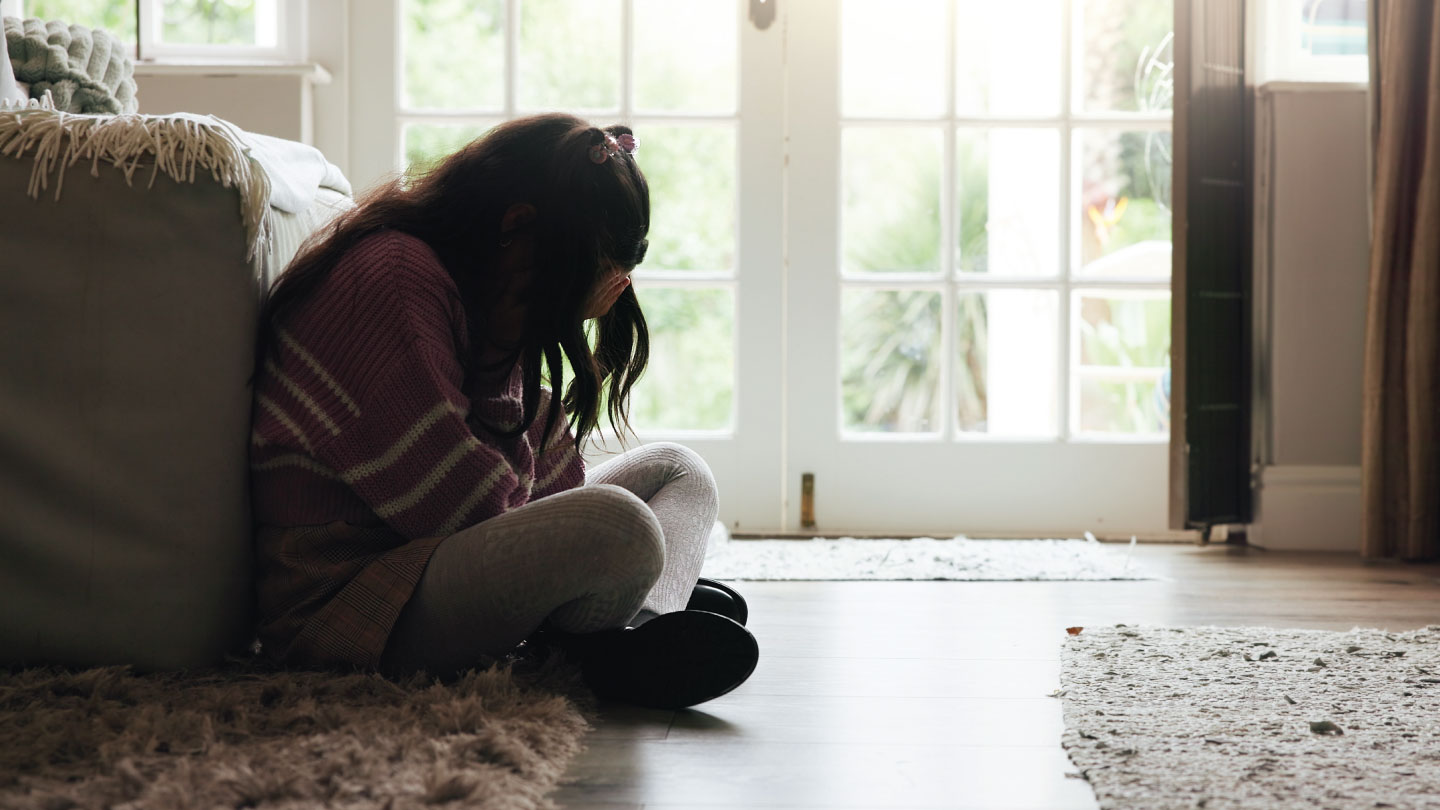Mental Health
Helping Children Heal From Trauma
Children are sensitive and often struggle to process information in a straightforward way after experiencing trauma. Understanding their unique responses and providing support can help them heal.

After a traumatic experience, some kids are open about their feelings and share what they’re going through, while others might keep things bottled up inside. The effects of traumatic experiences on young children are severe, but not all children are affected in the same way, or to the same degree. They may feel pressure to act like everything is fine or think that people expect them to just “get over it.” It can be tough for them to express their emotions, especially if they don’t have the right words to describe what they’re feeling. This can leave parents feeling unsure about how to support their child, as they might not realise the depth of what their child is experiencing.
Additionally, many kids tend to avoid reminders of the traumatic event, whether it’s a place, a sound, or even a particular activity. This avoidance can make it even harder for parents to understand their child's inner struggles. It’s important for parents to create a safe space for their children to express themselves, letting them know that it’s okay to talk about their feelings, no matter how big or small. By being patient and attentive, parents can help their kids feel supported and understood, encouraging them to open up when they’re ready.
Family and especially parents possess competencies that can protect their children from the long-term impact of trauma. Keep reading to know what can be done to help children deal with trauma
Need all your wellness solutions in one place? A whole new world awaits just a click away.
Related story: I Was Worried My Child Would Inherit My Anxiety--What Happend Next Was Surprising To Say The Least
Symptoms of Childhood Trauma
Emotional Symptoms:
- Loss of self-esteem or dignity
- Deep grief
- Depression
- Increased fearfulness (e.g., fear of the dark or monsters)
- Feelings of fear, vulnerability, shame, or guilt
Behavioural Changes:
- Change in mood and behaviour
- Excessive clinging to caregivers and difficulty separating
- Tantrums or irritable outbursts
- Reverting to earlier behaviours (e.g., baby talk, bed-wetting)
Cognitive Symptoms:
- Flashbacks or reliving the traumatic event
- Talking repeatedly about the event or pretending to “play” it
- Believing that the disaster can be undone
- Not performing well in school
Physical Symptoms:
- Disturbances in eating, sleeping, and toileting
- Change in sleep patterns or trouble sleeping
- Increased sensitivity to loud noises
Hyperarousal Symptoms:
- Feeling anxious or jumpy
- Being easily upset or angry
- Irritability or being uncooperative
- Feeling empty or numb
Related story: 10 Ways To Support Your Child's Mental Health
Presence of A Supportive Adult
According to a 2024 study published by the Centre for Research and Education on Violence Against Women and Children, the single most common factor in how children overcome adversity is the presence of at least one loving, consistent, and supportive adult, especially a parent, that helps shield children against adverse experiences. They can be a consistent resource for their children, encouraging them to talk about their experiences, and they can provide reassurance to their children that the adults in their lives are working to keep them safe.
Maintain Routines
Establishing and maintaining routines can provide children with a sense of stability in chaotic times. Be it for mealtimes, bedtimes, or family activities, try to create a predictable environment. This helps children feel more secure. If circumstances change—such as being homeless or temporarily relocated—try to create new routines that mimic the old ones. Consistency in family rules about behaviour also reassures children that some aspects of life remain unchanged and this would help in assuring a sense of normalcy.
Make Them Feel Safe
Physical affection helps children feel safe and secure after a traumatic event. Simple gestures like cuddling, hugging, or just simply offering a reassuring pat on the back can comfort children, conveying love and protection. These moments of connection help mitigate feelings of fear and anxiety and remind children that they are supported and cared for during difficult times and there is someone to look upto.
Related story: How to Inculcate Body Positivity in Your Child
Do Not Fabricate Facts
Children are inquisitive souls and hiding and lying about facts would do no good in healing the trauma. Instead, embrace open communication as it helps children process trauma. Providing age-appropriate, honest information about the event allows children to understand what happened without feeling overwhelmed. It’s always best to learn the details of a traumatic event from a safe, trusted adult. Also, be mindful of choosing calm moments to discuss these topics and let the conversations come naturally, instead of a forced one.
Understand That Every Child Copes Differently
Recognising that children have unique coping mechanisms is vital. Some may seek comfort in friends and family, while others may prefer solitude. Encourage your child to express their emotions, whether it’s anger, guilt, or sadness, and reassure them that it’s okay to feel differently than others. By validating their feelings and letting them know that it's normal to experience a range of emotions, you can help them navigate their responses in a healthy way.
Acknowledge Their Feelings
When children share their worries, it's essential to acknowledge their feelings without dismissing them. Phrases like “I can see that you are worried” validate their emotions and encourage open communication. It’s also okay to admit when you don’t have all the answers. What children need most is a trusted adult who listens, accepts their feelings, and offers support without judgement, fostering a safe space for healing.
Related story: 20 Phrases Your Child Wants To Hear
Age-Appropriate Tips to Help Children Deal With Trauma
For 0-2 years
Keep breastfeeding if you've been nursing your baby. There’s a myth that if a mother goes through shock, her breast milk becomes bad and can harm the baby’s development, but that’s not true. It’s really important to continue nursing to help your baby stay healthy and maintain that special bond with you. Remember, you need to take care of yourself, too, so try to eat well and drink plenty of water while breastfeeding.
Research shows that eye contact, touch and simply being in a mother’s presence help keep a baby’s emotions balanced, by creating a secure attachment between the caregiver and the baby. When a mother maintains eye contact, it conveys attention and responsiveness, making the baby feel seen and understood. Physical touch, such as cuddling or gentle stroking, releases oxytocin, often referred to as the "bonding hormone," which reduces stress and promotes feelings of comfort and safety.
For 2-5 years
Do not expose kids to the news. Young children tend to confuse facts with fears. They may not realise that the images they see on the news aren’t happening again and again. They should also not listen to the radio.
Give extra support at bedtime. Children who have been through trauma may become anxious at night. When you put your child to bed, spend more time than usual talking or telling stories. It’s okay to make a temporary arrangement for young children to sleep with you, but with the understanding that they will go back to normal sleeping arrangements at a set future date
Related story: 8 Ways to Enhance Resilience in Children Through Creativity
For 6-11 years
Reassure your child that they are safe. Children this age are comforted by facts. Use real words, such as hurricane, earthquake, flood, and aftershock. For kids this age, knowledge is empowering and helps relieve anxiety.
Draw out children who do not talk by opening a discussion with a relatable experience. For instance, you could say, “I noticed that sometimes I feel really worried after a big change, like when we had to move or when something unexpected happened. It’s okay to feel that way. How are you feeling?” This approach helps your child understand they’re not alone in their emotions, encouraging them to share their feelings as well. Just be sure to keep the focus on their feelings rather than sharing too much detail about your own anxieties.
For death related trauma avoid euphemisms for death like “He went to a better place.” School-age children are easily confused by vague answers. Instead, you can say, “Grandma has died, she is not coming back, and it is okay to feel sad about that.”
Need all your wellness solutions in one place? A whole new world awaits just a click away.
EXPLORE MORE
AI saves time, but it’s quietly draining our attention and our ability to think critically. Here’s how to regain focus without unplugging from modern life.
Every child worries as they grow up. But when anxiety starts shaping their behaviour, body, and confidence, parents need to pause and look closer. A psychologist explains how to spot the difference early.
Unloading your frustration can feel cathartic, but repeated venting may do more harm than good when it comes to emotional regulation.
Here’s a simple guide to different therapy styles and how to choose the one that fits your mind, mood, and moment.






.jpg)

.jpg)

